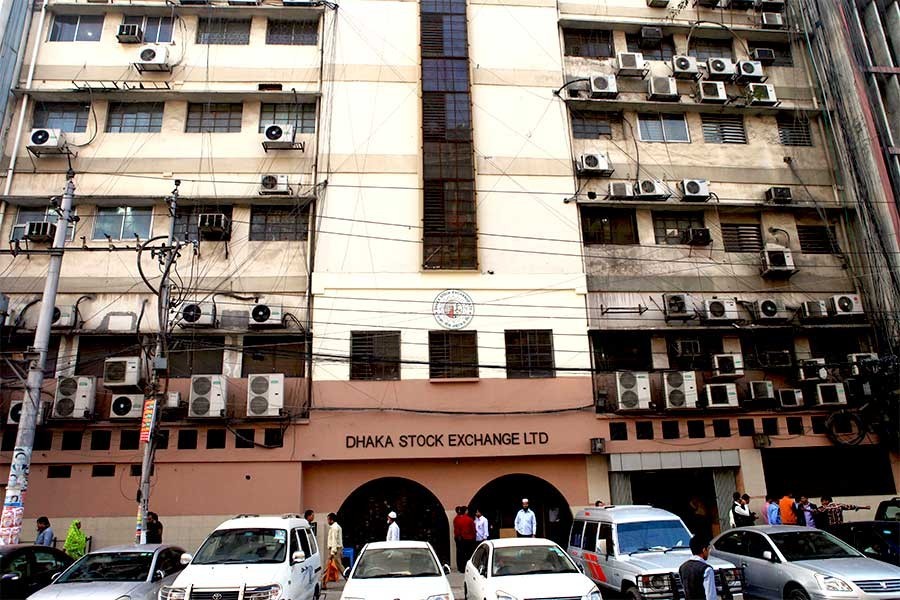
Published :
Updated :

The job of regulating a stock market is akin to that of flying a kite. One needs to unwind thread from the spool (locally known as natai) to help the kite go up and become steady on its own in the air. The kite-flying needs skill and the lack of it will, inevitably, lead the kite to go berserk and crash onto the ground.
Bangladesh stock market is now buoyant, unlike most other sectors of the economy. Covid-related restrictions are gone, but most businesses are finding the process of recovery slow. The poor response from the middle-class consumers, the backbone of any emerging economy, is blamed for that.
In such a situation, the ongoing buoyancy of the stock market merits both appreciation and proper scrutiny. After a decade since the 2010 collapse, the market has, lately, shrugged off a dull and drab look and is moving up and up. Even the lockdown could not resist its upswing. The trend must have soothed many eyes.
The market buoyancy has been possible due to regulatory measures and some behind-the-scene promotional works, it seems. The central bank was also a part of the initial initiatives to help the market recover.
The main index of the Dhaka Stock Exchange (DSE) has gone up more than 2,200 points during the last five months. The surge in stock prices, however, is marked by a few aberrations that are hard to ignore.
It is no denying that until recently, many issues with strong fundamentals have been under-priced. But given their current P/E ratio, some are now over-priced. Such a development, however, is acceptable, to some extent, in the case of quality issues. As the market is now unusually bullish, many low-quality stocks, popularly known as junks, are also having a heyday. Some issues with the P/E ratio over 4,600 are now drawing the attention of the investors. Against this backdrop, the Bangladesh Securities and Exchange Commission (BSEC) has asked the country's bourses to find out the causes behind the rise in prices of low-quality stocks. It also wants to know whether the margin loans are being disbursed by stockbrokers for stocks with a P/E ratio above 40.
The securities regulator in a directive, issued on June 15, 2010, had allowed margin loans for buying securities with a P/E ratio up to 40. That directive is still in place.
But how good are stocks having a P/E ratio of 35 or 40 for investment? Stocks with a P/E ratio of 15 or less are ideal ones. In the case of some fast-growing companies, an investor may find the P/E above 30 acceptable. The P/E ratio has nothing to do with the ongoing bullish market. The prices of most quality stocks have gone up. But what is worrying is that even junks, for no valid reasons, are also in high demand.
Take the case of four listed issues that were allowed to return to the main trading platform from the OTC (over-the-counter) market in June last. The Paper Processing and Packaging Limited's share on the first day of trading was quoted at Tk 17.6. On September 07 last, the same stock closed at Tk 233. For several days, the stock had hit the upper circuit breaker. Three other OTC returnees---Bangladesh Monospool Paper Manufacturing Company, Tamijuddin Textile Mills Ltd and Monno Fabrics Ltd--- also experienced a surge in their prices.
The central bank smelt rat as far as the use of stimulus packages was concerned and, on August 13 last, asked the banks to submit reports to it every day on their short-term loans and placements. It is worth mentioning here that some people had blamed the central bank for remaining indifferent to banks' over-exposure to the stock market in 2009-10, which had contributed to the 2010 stock bubble buildup and eventual collapse.
On the same day, the BSEC issued a directive allowing the brokerage firms to grant margin loans at a ratio of 1:0.8 until the DSE's main index remains below 8000 points. Earlier, the same ratio applied to DSEX remained below 7,000 points. Many saw the BSEC move as a counter to that of BB.
Undeniably, there are a few abnormal signs in the market. The securities regulator needs to read those carefully and try to contain those by measures equal to the task.


 For all latest news, follow The Financial Express Google News channel.
For all latest news, follow The Financial Express Google News channel.